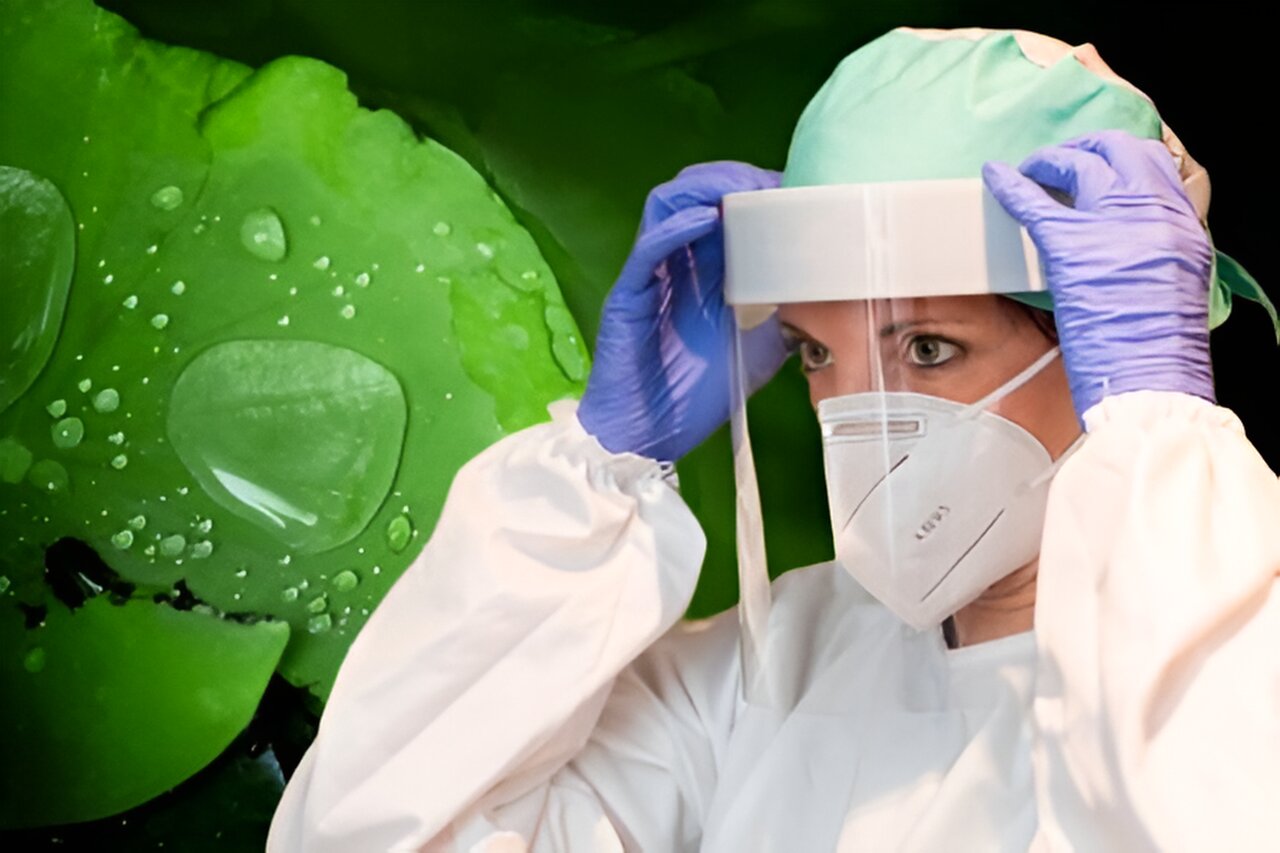College students on the College at Buffalo College of Dental Drugs utilized the science behind why water beads up on lotus leaves to unravel a pesky downside that arose in the course of the coronavirus pandemic.
Beneath the course of Praveen Arany, Ph.D., affiliate professor of oral biology, the scholars created free face shields and luxury bands as a sort of private protecting tools (PPE) with 3D printers that had been ultimately utilized by some 3,000 dental professionals in college facilities throughout the nation. First, nevertheless, the scholars had to determine the best way to forestall the shields from fogging up, which makes it exhausting for wearers to see.
Commercially obtainable anti-fogging options present in eyeglasses and automobile exteriors weren’t appropriate as a result of their potential to annoy the pores and skin or trigger illness if inhaled or ingested, Arany defined.
Lotus leaves offered a eureka second for the researchers.
“The hydrophobic nanostructure retains water from being absorbed within the leaves,” Arany defined. “They float and secrete a pure wax.”
After a number of formulations of wax that will preserve the PPEs clear and non-toxic, the analysis staff found {that a} mixture of carnauba and beeswax created optimum outcomes.
“With a few changes, the condensation simply rolled off,” Arany stated.
The researchers’ discovery is defined in a paper revealed Aug. 28 in Peer J Supplies Science and authored by college students Succhay Gadhar, Shaina Chechang and Philip Gross sales, with Arany.
The concept for the mission took place as a result of dentists wanted clear shields that additionally may accommodate dental loupes, the magnifying glasses they put on whereas inspecting sufferers’ mouths.
The dental college’s 3D printers, which had beforehand been used to create and examine medication-filled 3D-printed dentures, sensible fillings and bone regenerative scaffolds, had been sitting idle as soon as the pandemic hit.
“The technique was to create one thing like N-95 masks that had been clear,” Arany stated. “The pandemic, with its want for protecting masks and fits, exacerbated the worry that some folks have of dentists. Due to the opaque nature of the masks, nonverbal cues had been lacking.”
College students began working with Arany in spring 2020, they usually continued to excellent them over the subsequent 12 months, together with fixing the fogging difficulty. Additionally they found that isopropyl alcohol offered one of the best disinfectant for the reusable shields that would not disrupt the anti-fogging brokers and discovered the best way to form the masks at a slight angle in order that the sting would not damage the wearer’s face.
Remarkably, Gadhar, one of many major researchers, was a pupil at Williamsville North Excessive College (Amherst, New York) on the time. He learn in regards to the PPE mission within the native information and needed to assist rectify the condensation downside, Arany stated. Via a largely on-line collaboration, he was invited to hitch the analysis staff and got here up with the precise formulations that had been ultimately examined within the lab. He is now a biomedical engineering pupil on the College of Texas at Austin.
Chechang, who was a third-year dental pupil and is now an oral surgical procedure intern on the College of Chicago, carried out the sterilization research primarily based on her ongoing medical use of the PPEs. Gross sales, then a grasp’s pupil in organic sciences and now a second-year dental pupil at UB, led the 3D printing design and manufacturing that occurred in Foster Corridor on the South Campus.
Jaewon Kim, a former periodontics resident who now serves as an assistant medical professor on the College of Oklahoma’s Faculty of Dentistry, and Jacob Graca, then a third-year dental pupil who’s now a practising basic dentist in Redondo Seashore, Calif., additionally made key contributions to the examine.
A complete of 20 college students contributed to the analysis and the 3D printing, together with designing and working a PPE web site and manufacturing and delivering the PPE units.
They obtained emergency-use authorization approval from the Meals and Drug Administration to make and disseminate the face shields. Together with the dental professionals who benefited from the free face shields, well being professionals at Buffalo Common Medical Heart and Oishei Kids’s Hospital additionally used them in the course of the pandemic.
“This was an ideal studying expertise for my college students and for me,” Arany stated. “The masks had been actually wanted, and we had been thrilled to be helping our medical colleagues throughout this important time.”
Though medical professionals are at the moment not required to put on PPEs, this might change if unfold of the brand new coronavirus variant, BA.2.86, ends in well being care settings adopting stricter cautionary measures.
“The design rules are there,” Arany stated. “It is one thing we may manufacture once more if and when wanted.”
